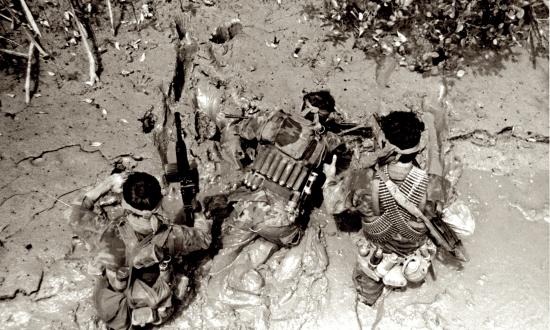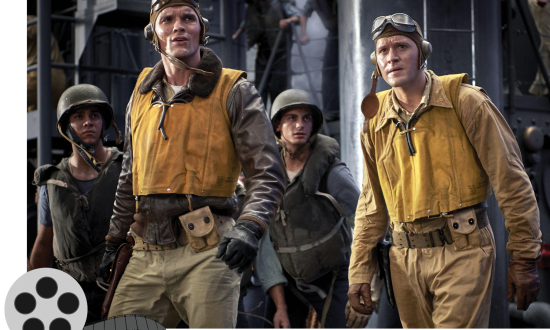The ASDIC ‘Committee’
Commander Fraser M. McKee, Royal Canadian Naval Reserve (Retired)
At 95, I’m a long-retired Canadian Naval Reservist, joining in March 1943 and fully retiring in 1978. In my early years, I was a “TAS”—torpedo antisubmarine—specialist. I much enjoyed Lieutenant Commander Cutler’s “Bluejacket’s Manual” column (April, p. 5) on the development of sonar—ASDIC in my days. As for his note about that acronym not standing for a “committee,” I can add the source for that canard.
In the House of Commons, Prime Minister Winston Churchill happened to use the term ASDIC in a speech, and a member asked him what it meant. Not knowing, he telephoned the Admiralty, and in his usual manner, wanted an immediate reply. In a quick ask-around, no one just then had any idea. So, figuring Churchill and the House certainly wouldn’t know any different, they quickly replied with the fictional Allied Submarine Detection International Committee. Churchill told the House, and the explanation went into the official Parliamentary transcript and is often quoted by otherwise quite reliable historians. After all, Churchill said so.
As Lieutenant Commander Cutler notes, there never was such a committee. In fact, the term ASDIC was already in use in the UK antisubmarine-detection field in 1917–18. I have copies of Admiralty Department Technical History notes for those years, in which the acronym appears. Because of the U-boat problems, the Admiralty had formed the Anti-Submarine Division—referred to as the ASD—to find a solution. Thus, anything to do with submarine detection was ASD + -ics (as with logistics, semantics, etc.). The whole matter makes a nice footnote to history!
In this issue of Naval History, I also was delighted to see the copy of Captain Eric Tufnell’s painting of the USS Essex (“Historic Ships,” p. 11). I have four of his commissioned paintings of ships in which I served: HMCS Wallaceburg, Royalmount, Nootka, and the submarine HMS Astute. He was prepared to do such watercolors “to order” for a very minimal charge. And because I have Rear Admiral Samuel Morison’s 15-volume History of United States Naval Operations in World War II, “Sam Morison’s Long Campaign” (pp. 28–35) will be saved therein as a commentary on his writing of your Navy’s history. Much enjoyed.
Finding the Right Fit
Lee Wetherhorn
I read “Acts of Valor” in the April issue (pp. 54–57) with more than my usual interest because I knew Seaman Rubin Binder, the forward gunner in Boatswain’s Mate First Class James E. Williams’ PBR. Binder was assigned to 3rd Division, USS Union (AKA-106), before moving to PBRs. He had a reputation for being the guy who messed up every assignment, and I was asked to talk to him. The excuse was that I was a Jewish officer. Because Binder also was Jewish, maybe I could help get through to him. I never thought the reasoning was valid, but I did have a personal man-to-man with him. My conclusion was everyone seemed to expect him to foul up, and he was just living up to those expectations. I suggested Binder ask for a transfer to get a chance to start over with a clean slate. I was sure he’d be OK in a new environment.
Binder took the advice to heart and volunteered for PBRs. I was strong in my support of his being allowed to go. In the end, as mentioned in the graphic story, he turned out to be a hero. I never maintained contact with him, and I was sad to hear he died a couple of years ago.
More on Midway
Danny Mohundro
In your April 2020 issue, Joseph T. Ponti noted a disturbing scene in the recent movie Midway, in which a fighter-bomber crew is tied to a small anchor and thrown overboard (“In Contact,” p. 4). I agree it was appalling for Hollywood to include this war crime in which pilot Ensign Frank W. O’Flaherty and Aviation Machinist Mate First Class Bruno Gaido were executed.
Alvin Kernan, at the time a 19-year-old sailor on board the USS Enterprise (CV-6), tells in his book The Unknown Battle of Midway that O’Flaherty and Gaido were killed by being thrown from the Japanese destroyer Makigumo with cans of water tied to their legs. The destroyer’s captain thought spilling their blood on board his ship would be unlucky. It is satisfying to note that bad luck was not avoided. The Makigumo sank off Guadalcanal in February 1943. Survivors recounted their captain’s orders concerning the executions.
Russ Allen
In response to Joseph Ponti’s letter, in which he finds the dedication at the end of the movie Midway “to the brave American and Japanese personnel who died at Midway” to be disturbing, I understand his concern. But even the enemies of my country who act honorably are deserving of honor (especially through the clarifying lens of time), whereas the dishonorable are deserving of none.
Personally, I found the movie to be immensely enjoyable. Though I found several technical errors in the story, without a doubt the most disturbing error to me comes on the Blu-Ray slipcase and box where it says the movie “tells the story of the leaders and soldiers who used their instincts, fortitude and bravery to overcome the odds.”
Listen up Hollywood: This is a movie about a naval battle; THERE ARE NO SOLDIERS IN THE NAVY. Can you imagine this kind of thinking? Foxholes in the ocean surely must follow.
The Vertical Launch System
Rear Admiral Morton E. Toole,
U.S. Navy (Retired)
In mentioning Navy interest “in vertical rather than mechanical launchers” (“Armaments & Innovations,” April, pp. 6–7), Dr. Friedman emphasized exposure to “the elements” as the cause for shift to VLS, namely, “Vertical launcher cells were simpler, better protected, and inherently more reliable.” Actually, the single-launcher system in which all missiles must pass from a magazine to launcher was susceptible to mechanical failure or shrapnel that would render it inoperative. That could result in a scenario of a shipload of missiles unable to shoot at the enemy because of the single launcher casualty. With VLS, each missile is its own launcher, and the ship can have, for example, up to 60 VLS launchers, vice one launcher with the old system.




